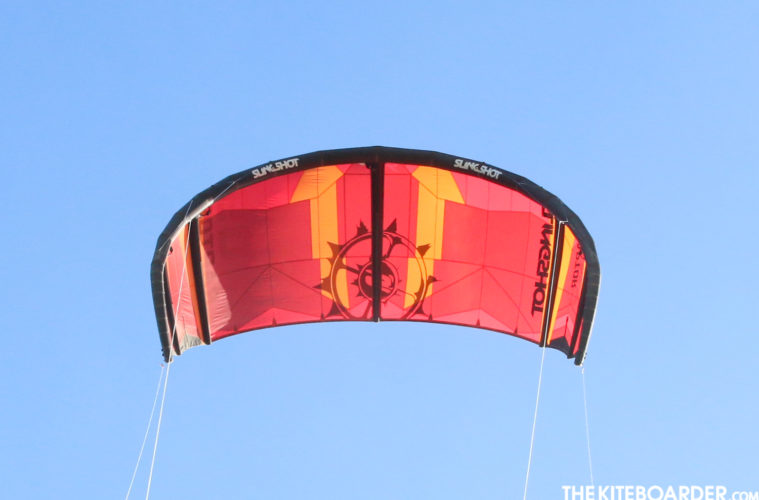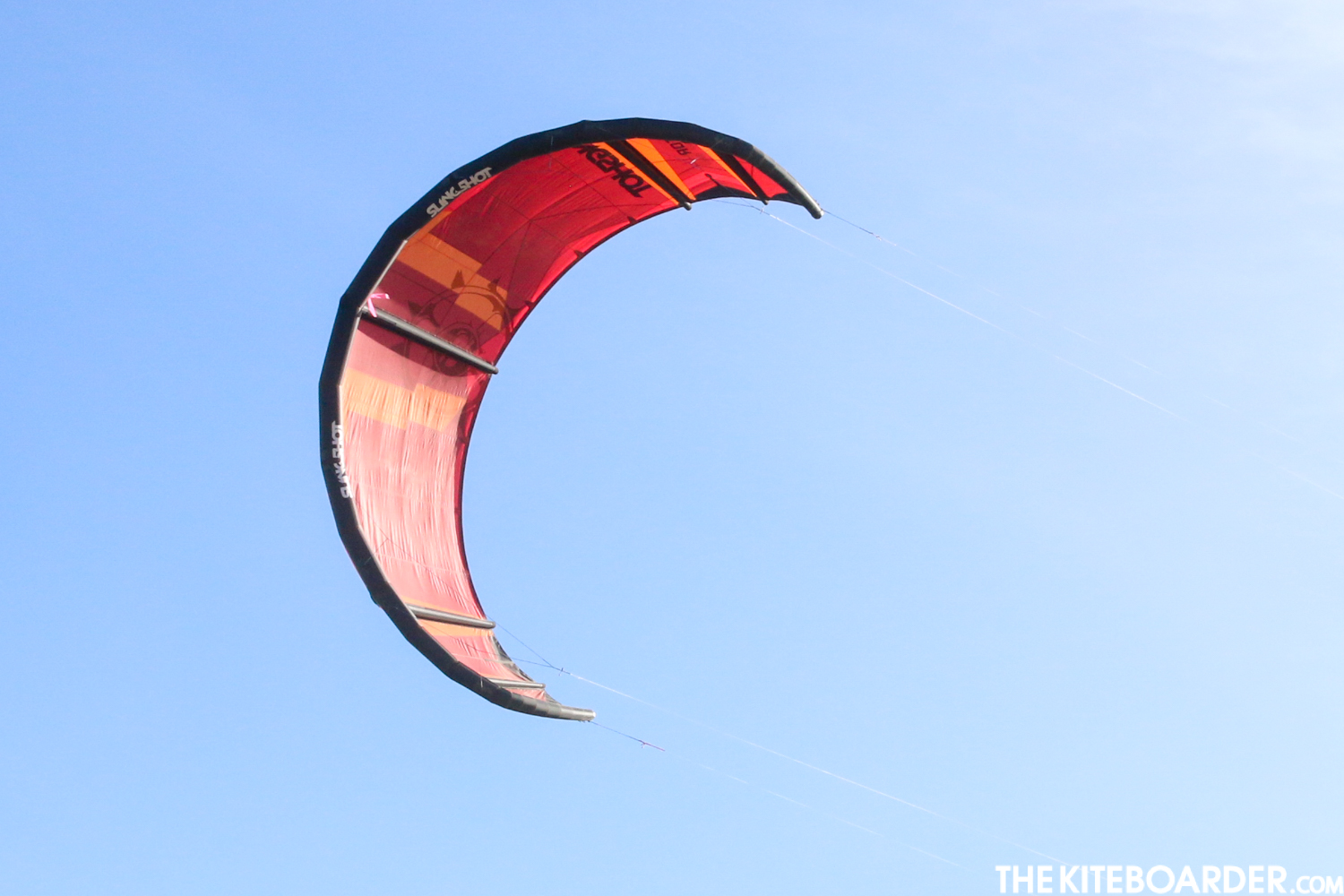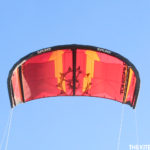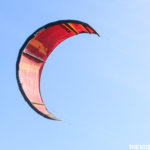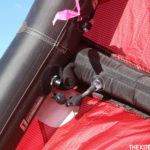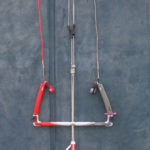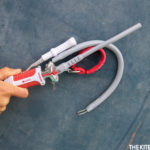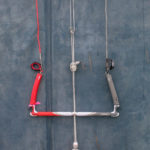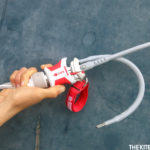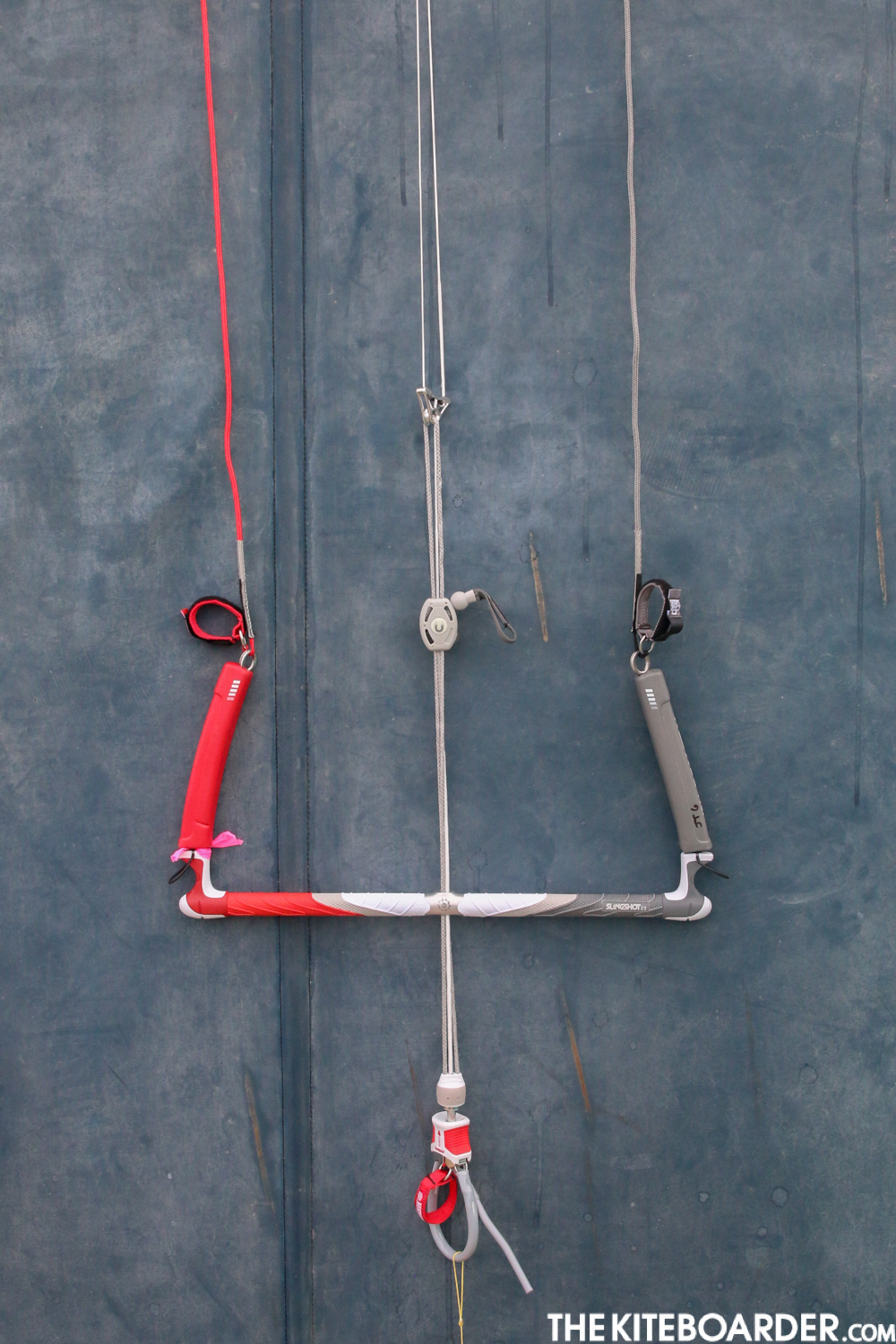Sizes Available: 6, 8, 9, 10, 12m
Sizes Tested: 9, 10m
Slingshot Says:
If Go Big or Go Home is your motto, this is the kite to get you there. NEW to the Slingshot lineup for 2020, the RAPTOR is a hard-charging, high-flying, big air freestyle/freeride crossover designed for riders who want big-time boostability and high-performance versatility.
Designed by Slingshot’s own mad scientist, Tony Logosz, the RAPTOR features a five-strut, hybrid Open-C canopy and familiar Slingshot DNA that give it pro-level top-end performance without sacrificing the safety or user-friendly feel that appeals to a broad range of riders.
Visit for more info: https://www.slingshotsports.com/Raptor-V1
Our Testers Say:
“Similar to the Rally in that it has constant pull; it’s very powerful and is just itching to boost and wants to score big air is where the Raptor truly shines.” // Dray Murray
“Lighter bar pressure compared to the Rally and faster turning and fun to fly ”” great Rally improvement.” // Marko Bartscherrer
“Stable, grunty with medium speed turning and good lift and plenty of low-end power with tons of boost on tap.” // Pierce Martin

TKB Says:
This is the first year for the Raptor with its 5-strut medium to higher aspect canopy that features a wider leading edge arc and flatter center canopy (what SS calls open-C) that is designed to be a performance big air freeride kite. The Raptor is really part of a two-prong plan to phase out the legendary Rally delta shape in the SS lineup. The Rally had earned a reputation as SS’s big air kite as well as a widely acclaimed all-around freeride machine ”” and the problem is that these reputations cover a lot of territory for a designer to integrate into one kite. For that reason, this year the Rally has been replaced by the Raptor with its narrowed focus on big air performance and the Rally GT (user-friendly freeride) so that each segment gets better fine-tuned qualities that meet the two separate styles of riding. The Raptor comes with a large diameter bayonet-style inflation valve that requires no nozzle on the end of your standard pump hose for a quick and easy pump up. When it comes time to deflate, there’s a standard dump valve that allows you to quickly deflate the kite without unthreading the bayonet valve. The Raptor comes with a single setting fixed bridle that doesn’t require any pulleys for changing the angle of attack. The front bridles end in loops and the wingtip pigtails end in knots. The wingtip offers three settings to adjust kite feedback with the stock setting farthest toward the wingtip ”” the lesser feedback setting. That Raptor canopy is well-built with dacron panels at the wingtip LE, soft EVA battens and a dacron trailing edge.
This being the first look for the Raptor, its medium to high aspect airframe has the feel of a performance freeride kite that does its best to deliver top tier boosting power without sacrificing user-friendly broad market appeal. The Raptor comes in with medium-plus bar pressure that is in the same ballpark as the classic Rally and delivers fairly swift steering response with middle of the road turning speed that balances ease of use against trigger-like performance sends. The Raptor offers a fairly progressive sheeting feel that keeps it intuitive to riders of all levels and the turning arc is a bit wider than the Rally and better suited for generating large amounts of lift. The Raptor has a constant steady pull much like the Rally and that low-end grunt delivers when you load and release the kite into upper parts of the window. The Raptor doesn’t fly as far forward in the window as some other performance freeride kites but it still seems to be happiest when charging at the edge of the window and reaching for the skies. The Raptor doesn’t try to match the SST’s middle of the window turning, drift and comfort, but instead really shines on pulling power. We found the relaunch on the Raptor to be exceptional. From nose down at the bottom of the window the Raptor requires little input from the bar to get it to flip up and launch back into the air without dragging a wingtip or delay. The Raptor has a well-built solid airframe that offers durability and is begging to handle a ton of load and power without distorting the canopy or airframe. The Raptor is definitely a high-performance notch over its Rally GT half-brother and keeps its focus on big powerful boosting and long hangtime airs while keeping the user-friendly steering and sheeting that creates confidence and comfort.
Our Slingshot kites came with both the Compstick Guardian or Compstick Sentinel control bars. Both of these bars are fixed length bars that are available in three sizes: 17” width with 20m lines, a 20” width with 23m lines (3m ext), and a 23” width with 27m lines.
The Compstick Sentinel features above the bar power tuning with single centerline safety depower, a spectra sheeting/throw line with sliding stopper, adjustable length throw, a tuning cleat power system with a toggle that uses a magnet to control excess tuning slack and a low V. The inside lines end in knots and the outside lines end in loops. The Sentinel offers a sturdy quick release that integrates a below the bar hand swivel which also doubles as a quick-release guard. The quick-release handle locks in the open position and resetting is fairly straightforward; simply place the end of the loop back into position and then depress a stainless steel tab that frees the release handle and locks the quick release back together. The Compstick is the only bar in our test that featured dual outside line OS handles with no adjustment for outside line length. The bar ends offer bungees for keeping the lines clean and the floats are separate from the bar ends. While testers liked the smaller diameter grip and raised volcano next to the insert which helps avoid pinched fingers, they also noted the grip was fairly dense with thin rubber ridges running along the handle that made for a very aggressive yet solid grip. The left side of the bar and the floats are a red color for very clear and obvious color-coding that is unmistakable.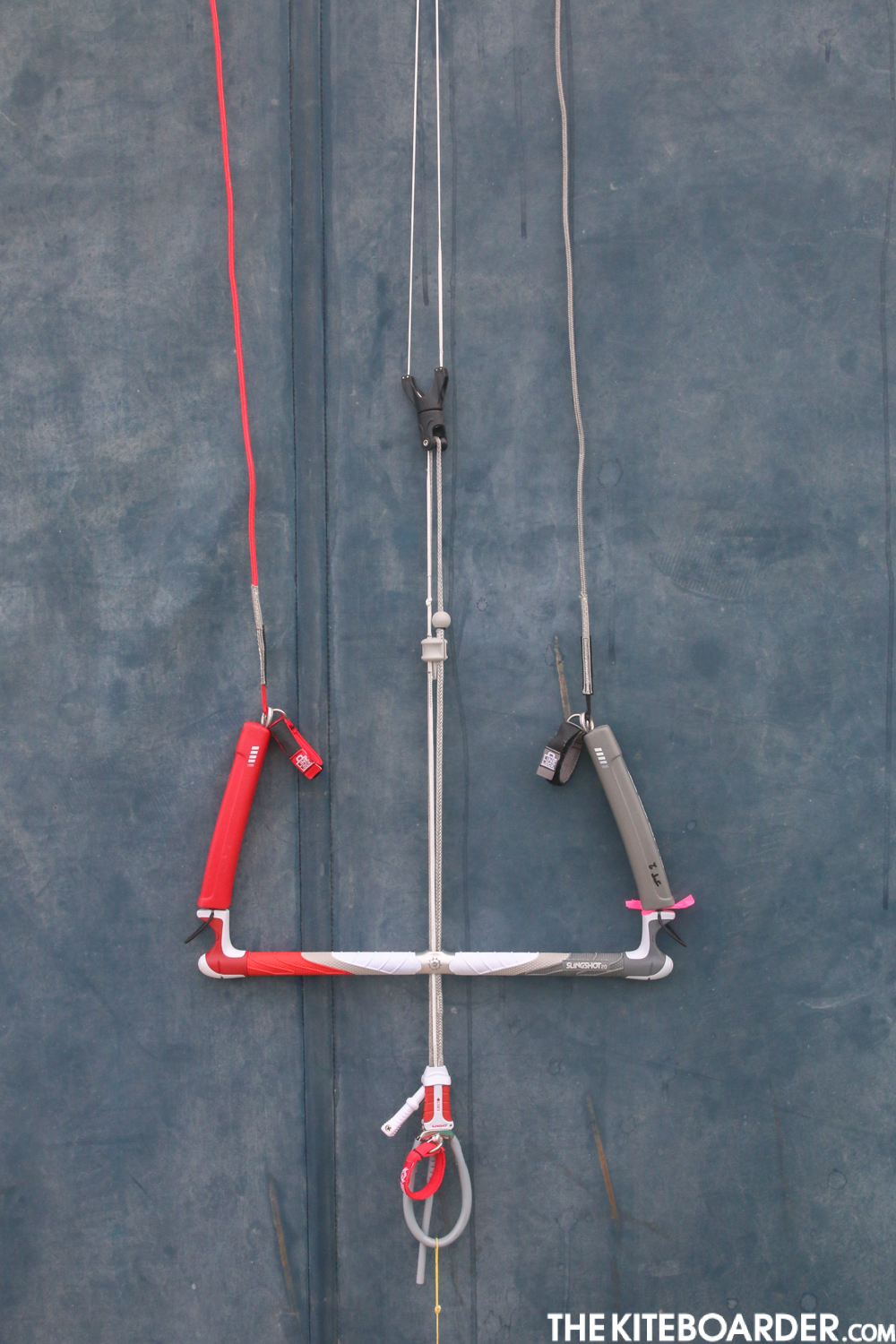
The Compstick Guardian features single centerline safety depower, a spectra sheeting/throw line, a low V, a sliding stopper and below the bar cleat tuning integrated into the push away quick release. There’s no travel guard or below the bar hand swivel but the quick release is compact and keeps a large amount of throw travel within reach of the rider. This bar uses Slingshot’s existing Guardian quick-release system which puts the kite’s tuning below the bar, which allows surfers to increase the amount of throw/sheeting while still being able to reach the tuning of the kite. Testers who are not used to below the bar sheeting often find it’s difficult to get the leverage to operate the cleat, but with the proper technique (place the cleat on the side of your favored arm and sheet out while adjusting) this is a fairly easy and functional design for performance kitesurfers. The bar design and other rigging are the same as the Compstick Sentinel (see above). If the advantages of below the bar tuning systems are lost on you, then check out the Compstick Sentinel.
Visit for more info on the bars: www.slingshotsports.com/slingshot-kite/slingshot-kite-bars

Want to view all our 2020 Freeride, Light Wind and Wingsurf Gear Reviews in one convenient digital guide? Get free access HERE. If you’re already a subscriber, thank you for your support! Log into your account to view our 2020 Freeride Gear Review Guide.


